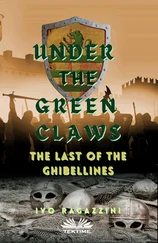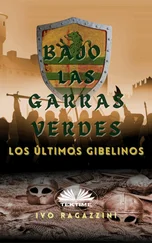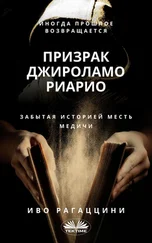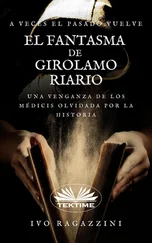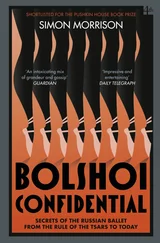The confusion was related to the fact that long before, at the time of the Consul Flaminius, the Romans had created a defense made up of three defensive lines arranged one behind the other, as instructed by the military technique of the time, to stop no one less than Hannibal 12who had crossed the Alps with his troops and some elephants and would descend towards Rome by way of the Via Flaminia. Its construction had been completed a few years before, and the people in the area had named it Roman-Dia and also Roman-Via, which meant, if you prefer, Roman Crossing or Way to Roma.
The names Romània, Romandiola and the current Romagna were derived from these terms.
The final defensive line of the Rubicon had been drawn almost entirely on the river that is known today as the Uso.
The other two lines of the Rubicon were: one on the Pressatellum river today called Pisciatello and the other on the river now called Fiumicino. And probably both, if not all three, were linked by canals and hydraulic locks to the mountain springs of the Urgon, another river whose name historians believe meant Rubicon in the Romagna dialect, but which in Etruscan meant something else, as you will read more about later. 13
Several miles of that boundary on the Uso river were cordoned off by a row of tall wooden poles and boards held together by iron and metal brackets and, until 1750, remnants of those palisades still existed on the banks of the Uso river, so much so that the farmers there used to take them to make agricultural tools.
If you now think that such a work was too large or impossible for the Romans, you should know that Crassus, a contemporary triumvirate of Caesar, created a similar work around 70 BCE, which divided Calabria in two, from the Tyrrhenian to the Ionian coast, with a four meter high palisade, to isolate the revolt of Spartacus and his rebel gladiators who had taken refuge in Aspromonte.
Moreover, the Rubicon had stones and red cultured sand on the Uso river that no longer exist today, but had been in existence until the end of the 1700s, as the academic historians of the time reported and argued about for a long time, theorizing that the Romans had colored them red to make it clear that this was the Rubicon.
However, those were not really stones and sand that the Romans had purposely colored red, but the ruby-red pigment that had fallen to the ground once the color on the wooden palisade had been swept away little by little by rain and floods, as time passed and the wood of the palisade had rotted.
Furthermore, opening barriers and water channels upstream from the sources of the Urgon would have swelled the Rubicon; the steep banks 14were raised artificially to sink those attacking and attempting to cross it on foot or on horseback into the mire, not to mention Hannibal's elephants.
The land, where the Rubicon was located, was called Roman-dia, diameter, district or Roman area, since the land was used by the legions to cross or camp entire units of legionaries, before entering the Roman territory or to recompose new legions, including veterans and those waiting nearby to be enlisted before marching to the north and the Gauls.
Therefore, when someone says that Romagna has always been a happy and hospitable land full of festivals and entertainment, they are telling the truth, because it was true even then, as was all the land along the border, where the legionaries from various places set down their arms, collected their reward and devoted themselves to various festivities and leisure time, while waiting for new engagements and assignments.
And perhaps it is not even a coincidence that many German citizens and those from northern Europe have continued to come to Romagna for their holidays for centuries and consider it their second home, but there is more to be learned about this.
The conversation between Caesar and Hortensius continues
As they continued to travel across Romagna, Caesar told Hortensius: "You should know that what Pompey is doing with us now, Gaius Flaminius had also been deployed to the Puniceus Rubicon in defense formation when he was waiting for Hannibal's descent."
"And how did it end between Flaminius and Hannibal?" asked Hortensius.
"It ended badly. The tribune Flaminius was good as a builder and politician, but he was a little less so as a soldier. He first built the Via Flaminia and then, using the same military engineers, he made a splendid defensive line against Hannibal. But he made a careless strategic error and none of it ended well," said Caesar
"What mistake did he make?"
"When some of Hannibal's units arrived in advance in front of the Rubicon, they saw the well-organized and defended lines that blocked their way to the road to Rome. So they decided to avoid getting into an inconvenient fight and to pass through the Apennines, departing Cesena and going towards Sassinia and Balneum, then continuing to Arretium in the Tiber valley, 15while the bulk of Hannibal's army went through the mountains above Modena and re-joined the units in advance."
"And then?"
"Flaminius felt cheated and made the strategic miscalculation of leaving the Rubicon with his troops, and he began to chase Hannibal through the Apennines. It was an immense tactical error because Hannibal, having crossed the Alps, had a tactical superiority on those mountainous trails, while Flaminius's legions were trained and accustomed to garrison a place and to march and maneuver in compact formation on flat, wide planes," Caesar explained.
"And how did it end?" asked Hortensius.
"It ended extremely badly. Flaminius began to pursue Hannibal who drew him into a long and narrow gorge, where there were mountains on one side and Lake Trasimeno on the other, which prevented him from being able to manoeuver.
While Hannibal was pretending to escape, he made his cavalry climb into the mountains to wait for the Roman troops and so, when Flaminius arrived, he was surprised by Hannibal's cavalry, who first tumbled large boulders onto the Roman formation, broke it apart and then fell upon them on horseback, exploiting the strength and speed they could gain down the mountain slopes to subdue and overwhelm them."
"At the same time a part of Hannibal's army, which had pretended to escape, turned and went to meet the Roman army to finish them off in hand-to-hand combat. Thousands of Romans died including Flaminius," explained Caesar.
"How is it possible that Flaminius made such a tactical error?" asked Hortensius.
"I've no idea. It was probably the senate in Rome that became scared and ordered Flaminius to leave the Rubicon to join the legions under another consul, who was waiting for Hannibal outside Rome, and then attack Hannibal together in the open plain."
"However Flaminius, during the march, reached Hannibal's army a lot earlier and began to pursue him closely, which is a very dangerous thing to do while moving in narrow spaces and roads because of the counter-moves and maneuvers the opposing army is able to perform."
"What countermoves?"
"Come on, Commander Hortensius. Counter moves such as halting to take them by surprise, turning and quickly preparing for battle and waiting for the enemy army, which continues to advance rapidly, falling into your hands as the vanguards are propelled by the units in the rear that march on too quickly and push through ever knowing what's happening up ahead," smiled Caesar who had seen and played such tactical maneuvers during military campaigns in Gaul.
"Ingenious. But how would you have done it, Caesar?"
"The senate should have ordered Flaminius only to follow Hannibal a little further away, without making contact and at the same time have the other consul, who was waiting for Hannibal outside Rome, create a small defensive line, so as to take him in the open plain with an army in front and one behind," explained Caesar.
Читать дальше
